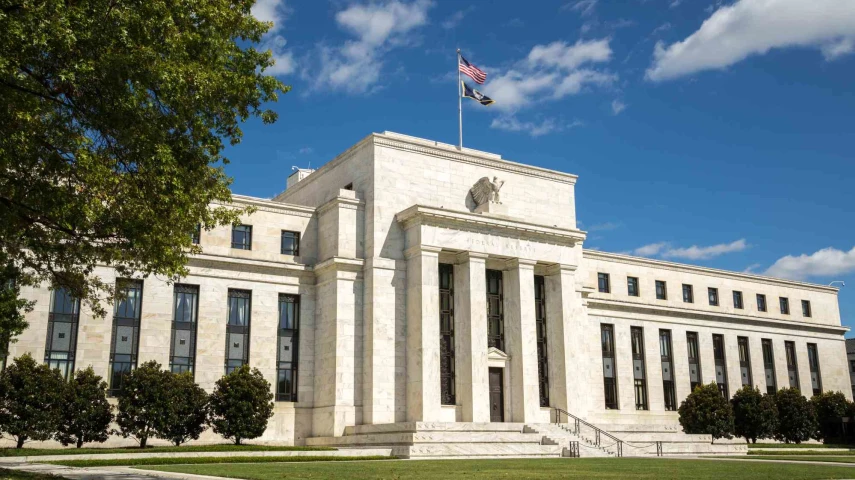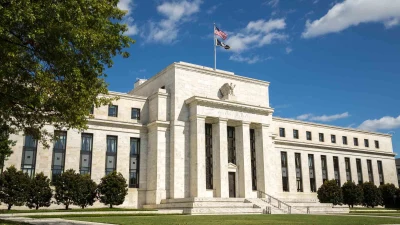How the US Federal Reserve killed regional banks



An aggressive hiking cycle, an inverted yield curve and maturing government bonds have created a major banking disaster.
The United States is in the midst of a major banking crisis. Silicon Valley Bank (SVB) and a handful of other failures were not outliers. It is now common knowledge among US investment managers that regional banks across the US are in serious trouble.
Calling this a bank run is missing the point. Depositors withdrawing their money is not a problem when there is a healthy spread. But the speed and fury of the Fed’s rate hikes — from zero to 500 basis points in 12 months — is effectively monetary whiplash for the bond market.
And across the globe, no other assets have been considered safer than US Treasures. But 10-year yields are up around 3.4 per cent, reflecting heightened risk.
“In today’s intricately connected global capital markets, US Treasuries occupy an almost unassailable position,” reads a BNY Mellon report from 2019.
“Their reputation as the ultimate risk-free asset has been solidified by the episodic volatility that has roiled markets in the years since the 2008 collapse and by the post-crisis rules that gave them new prominence as a safe haven for investors.”
In July 2019, there were close to US$16 trillion in outstanding US Treasuries, or government debt. Today, there are close to US$25 trillion of US Treasury securities outstanding. US banks are the largest holders of this debt. And now that rates have been jacked up to 5 per cent, banks have a huge hole in their balance sheets.
To understand the significance of what is unfolding in America, you really need to speak to an American. Money Management caught up with Chris Wallis, CEO and CIO of investment manager Vaughn Nelson, to get some clarity.
“We’ve reached a point in markets globally, but certainly here in the US, of instability and a lack of balance,” Mr Wallis said.
“The policy tools have been used for the last 10 years, which are effectively benign excess monetary policy and stimulus payments, they’ve lost that tool. That’s why we’ve seen such a significant move out of the Fed and the Fed effectively creating a banking crisis just to meet the political needs of fighting inflation,” he said.
Mr Wallis believes the growth algorithm for the US economy will soon break down completely.
“They will need to decide whether they want to fight inflation or have a banking crisis and a deep recession,” he said. “The US went into recession over the month of March and into April.”
What has most investors baffled is how recessions play out when inflation is high. When inflation is low, a recession can easily be measured in negative economic growth or GDP. But when inflation is running hot, it’s earnings and margins that take a hit.
“I don’t think it is widely accepted yet that the Fed has caused the banking crisis,” Mr Wallis said.
He believes the US banking crisis is far from over.
“It is not contained by any stretch of the imagination,” he said. “We are going to see more banks fail.”
Meanwhile, rising bond yields could present a buying opportunity for investors. VanEck announced that its one- to three-month US Treasury Bond ETF (ASX code: TBIL) will list on the ASX this week.
Arian Neiron, CEO and managing director of VanEck Asia Pacific, said the fund is launching at an opportune moment for investors.
“Short-term treasury bond yields should continue to rise while inflation persists,” he said.
Mr Neiron commented that history has shown when confidence erodes or when volatility spikes in financial markets, investors gravitate towards short-term US treasury bonds as a safe haven because they are considered a “risk-free” asset as their payments are backed by the full support and credit of the US.
“US government bonds are highly rated by Fitch, S&P and Moody’s,” he added.
Recommended for you
Natixis Investment Managers has hired a distribution director to specifically focus on the firm’s work with research firms and consultants.
The use of total portfolio approaches by asset allocators is putting pressure on fund managers with outperformance being “no longer sufficient” when it comes to fund development.
With evergreen funds being used by financial advisers for their liquidity benefits, Harbourvest is forecasting they are set to grow by around 20 per cent a year to surpass US$1 trillion by 2029.
Total monthly ETF inflows declined by 28 per cent from highs in November with Vanguard’s $21bn Australian Shares ETF faring worst in outflows.











